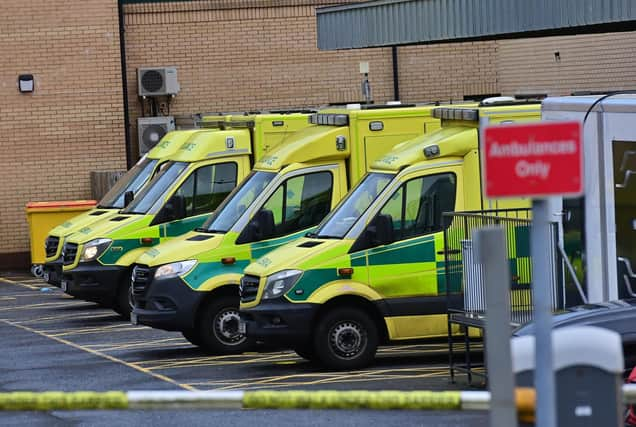Delays in patient handovers cost ambulance service 108,000 hours in a year


Michael Bloomfield, chief executive of NIAS, told Stormont’s Health Committee, that the service is “operating under extreme pressure most of the time”.
He said: “Regrettably many patients are waiting too long for an ambulance response in the community.
Advertisement
Hide AdAdvertisement
Hide Ad“While we always prioritise the most urgent calls, response times, even for the most clinically urgent calls, are increasing.
“Of particular concern is the increase in response times for category two calls, which should receive an 18-minute response.
“We had a mean of 34 minutes in quarter one of this (financial year), that has increased to 57 minutes by quarter three.
“The main reason for this increase is the impact of wider pressures across the unscheduled care system.”
Advertisement
Hide AdAdvertisement
Hide AdMr Bloomfield said discharging patients from hospital wards was resulting in overcrowding at emergency departments.
He said: “This, in turn, means that very often ambulance crews arriving at ED are unable to hand over their patients in a timely way, meaning they are not available to respond to those calls waiting in the community.
“In 2023 NIAS lost 108,000 hours waiting to hand over patients outside ED beyond the 15-minute standard – that is equivalent to 23% of our overall capacity.
“The average handover time increased to a peak of 90 minutes in December 2023 and the proportion of handovers taking longer than two hours increased from 8.8% in quarter one to 19.2% in quarter three.
“That level and pace of deterioration is very concerning.”
Advertisement
Hide AdAdvertisement
Hide AdMr Bloomfield said people waiting for extended times in the back of an ambulance “presents a risk and poor experience for patients”.
He said his staff were regularly unable to finish their shifts on time and missed rest periods, impacting staff absence and morale.
Mr Bloomfield said a priority for the ambulance service was ensuring crews only take patients to hospital when there is no alternative.
He said: “We believe there is potential to considerably increase the level of non-conveyancing and we are working closely with our other trust colleagues to increase access to suitable alternatives such as hospital at home.
“Also to provide the training and support for our staff to be able to make full use of the alternatives that are available.”